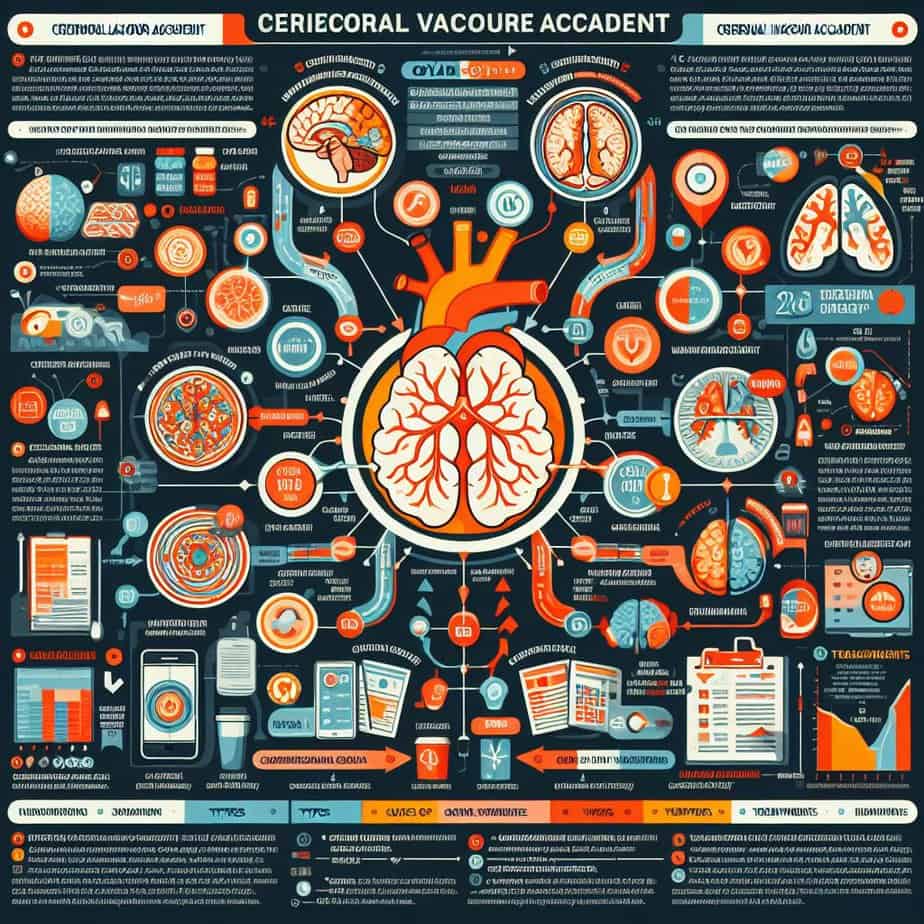The History of CVA ICD-10 Coding: A Comprehensive Overview
Accurate coding in healthcare, particularly for cerebrovascular accidents (CVAs), is essential to ensure quality patient care and smooth healthcare administration. The International Classification of Diseases, 10th Edition (ICD-10), serves as the cornerstone of this system. This coding system plays a crucial role in the diagnosis, management, and treatment of strokes, offering a standardized approach that enables better coordination of care, improves outcomes, and supports public health initiatives. Understanding the history and evolution of the CVA ICD-10 code is vital for healthcare professionals, medical coders, and researchers in the field.

We will explore the history of the ICD-10 coding system, how it has impacted the diagnosis and management of cerebrovascular accidents (CVAs), and the ongoing challenges and benefits associated with its use.
What is History CVA ICD-10? Understanding the Basics
The International Classification of Diseases (ICD) is a globally recognized system for classifying diseases, conditions, and health-related issues. The 10th edition (ICD-10) was introduced by the World Health Organization (WHO) to replace the previous version, ICD-9, and it was designed to offer more precise and detailed coding for a wide range of medical conditions.
The ICD-10 system ensures that healthcare professionals can clearly communicate diagnoses, facilitates accurate billing and insurance claims, and supports public health tracking. When it comes to cerebrovascular accidents (CVAs), ICD-10 codes are critical for documenting strokes, including their type, severity, and complications. This level of detail is essential for both treatment and research purposes.
What is a CVA (Cerebrovascular Accident)?
A Cerebrovascular Accident (CVA), commonly known as a stroke, occurs when there is a disruption in blood flow to the brain, leading to brain cell damage. There are several types of CVAs:
- Ischemic Stroke: Caused by a blockage in a blood vessel supplying blood to the brain.
- Hemorrhagic Stroke: Occurs when a blood vessel in the brain bursts, leading to bleeding.
- Transient Ischemic Attack (TIA): Often called a “mini-stroke,” where blood flow to the brain is temporarily disrupted.
- Cryptogenic Stroke: A stroke with no clear cause despite testing.
Each of these stroke types requires different treatments, making accurate ICD-10 coding crucial for appropriate care.
The Evolution of ICD-10 Coding
The ICD system has undergone several revisions over the years. The first edition of the ICD system was introduced in 1948, and it has evolved over time to accommodate new medical knowledge, diagnostic techniques, and treatment options.
- ICD-1 through ICD-9: The initial versions of ICD were used primarily for mortality data and medical statistics. However, as medical technology and understanding improved, the need for a more detailed and versatile system became evident.
- Transition to ICD-10: In 1992, the World Health Organization began developing the ICD-10, which was officially implemented in the United States in October 2015. This transition marked a significant leap forward in coding precision and healthcare data collection.
ICD-10 included much more specific codes for diseases, allowing for detailed reporting of conditions like strokes. Unlike its predecessors, ICD-10 has over 70,000 codes, providing a more robust framework for tracking and documenting diseases, including cerebrovascular conditions.
History of CVA ICD-10 Code Structure
The ICD-10 coding system for cerebrovascular accidents is multifaceted. For example, the codes related to CVA are located in Chapter 9, which covers diseases of the circulatory system. The specific range of codes for CVA begins with I60-I69, and it includes distinct categories for:
- Ischemic Stroke (I63)
- Hemorrhagic Stroke (I61, I62)
- Transient Ischemic Attack (TIA) (G45)
- Stroke due to Unspecified Causes (I64)
Each of these codes can further be subdivided based on factors such as the exact type of stroke, its severity, and whether complications such as paralysis or speech impairment have occurred.
Challenges in History CVA ICD-10 Coding
While the ICD-10 system offers greater precision, it is not without challenges, particularly when it comes to coding cerebrovascular accidents. Some common hurdles include:
- Complexity of Codes: The number of codes and their variations can make it difficult to select the correct code, especially when the diagnosis is unclear or multifactorial.
- Frequent Updates: The coding system evolves, and regular updates are necessary to keep up with the latest clinical findings and treatment approaches.
- Training Requirements: Medical coders must undergo continuous training to stay updated on the latest guidelines and best practices for ICD-10 coding.
Despite these challenges, healthcare organizations and coding professionals can overcome these issues by focusing on education, collaboration, and using advanced coding tools to streamline the process.
Benefits of Accurate History of ICD-10 Coding for CVA Management
The use of ICD-10 codes has provided several important benefits in the management of cerebrovascular accidents:
- Improved Communication: The granularity of ICD-10 codes ensures that healthcare providers can effectively communicate about the type and severity of strokes, leading to more targeted and effective treatment.
- Enhanced Patient Outcomes: With precise codes, physicians can track the progress of stroke patients more accurately and adjust treatment plans accordingly.
- Better Data for Research: ICD-10 data is invaluable for epidemiological studies, helping researchers track stroke trends, risk factors, and the effectiveness of preventive measures.
ICD-10 and Stroke Research
The data generated from ICD-10 codes is crucial for advancing stroke research. Researchers can use the vast amount of coded data to:
- Identify Risk Factors: By analyzing patterns in stroke incidence and outcomes, researchers can identify risk factors such as hypertension, diabetes, and lifestyle choices.
- Improve Public Health Initiatives: Data from ICD-10 coding can help public health organizations design better prevention programs and allocate resources more effectively.
- Refine Treatment Protocols: By analyzing coded patient data, healthcare providers can identify the most effective treatments for specific types of strokes and refine clinical guidelines.
The Importance of Training in ICD-10 Coding
Accurate coding is essential for effective healthcare delivery, and to achieve this, continuous training is key. Medical coders must stay up to date with the latest guidelines and updates to ensure that they are coding CVA cases correctly. This requires ongoing education, including:
- Online Courses
- Workshops
- Certification Programs
Coders who are well-trained in ICD-10 are better equipped to navigate the complexities of cerebrovascular accident coding, leading to more accurate data and improved patient care.
Future Trends in ICD-10 Coding for CVA
As technology continues to evolve, the future of ICD-10 coding for CVA looks promising. Some trends to watch include:
- AI and Machine Learning: Advances in artificial intelligence may soon assist coders in identifying the most accurate codes faster and with fewer errors.
- Real-Time Updates: With real-time data collection and integration, updates to ICD-10 codes could happen more swiftly, keeping healthcare professionals on the cutting edge.
- Integration with Electronic Health Records (EHR): More seamless integration of coding with EHR systems will help reduce human error and streamline the workflow.
FAQs on CVA ICD-10 Coding
Q1: What is the ICD-10 code for ischemic stroke?
A1: The ICD-10 code for ischemic stroke is I63, with subcategories based on the specific location and severity of the stroke.
Q2: What’s the difference between a TIA and a full stroke in ICD-10 coding?
A2: A Transient Ischemic Attack (TIA) is coded as G45, while a full stroke is coded in the I60-I69 range, depending on the type (ischemic, hemorrhagic, etc.).
Q3: Why is accurate ICD-10 coding important for CVA patients?
A3: Accurate coding ensures that the correct treatments are administered, helps track patient progress, and provides reliable data for insurance billing and public health statistics.
Q4: How often are ICD-10 codes updated?
A4: ICD-10 codes are updated regularly to reflect new medical research, treatments, and changes in the healthcare system. These updates usually occur annually.
Q5: Can ICD-10 codes help in stroke prevention?
A5: Yes, ICD-10 codes can help track stroke trends and identify high-risk populations, which supports the development of targeted stroke prevention strategies.
Conclusion
The history of CVA ICD-10 coding has played a pivotal role in improving the diagnosis, management, and treatment of cerebrovascular accidents. While there are challenges in adopting and applying these codes, the benefits are undeniable, particularly in enhancing patient care and advancing research. By understanding the evolution of ICD-10 and staying informed about current trends, healthcare professionals can ensure the highest standards of stroke management and contribute to the ongoing fight against cerebrovascular diseases.

